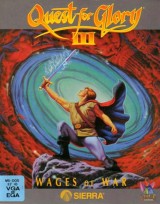Review for Agatha Christie: The A.B.C. Murders

Game information
First published in 1936, The A.B.C. Murders was the seventeenth novel from prolific mystery writer Agatha Christie. It's now become the seventh Agatha Christie video game to be released in recent years, and the first to appear exclusively on the Nintendo DS. While Dame Agatha's mysteries would seem ideal for adventure game adaptation--and the first three released by The Adventure Company did indeed follow this format--more recently, casual games based on Christie's work have entered the mix, making it hard to know where this newest game would fall.
Now that I've played it, I can definitively say that The A.B.C. Murders is not a traditional adventure game like And Then There Were None and Murder on the Orient Express, nor is it a hidden object game like Death on the Nile or Peril at End House. I can't, however, definitively say what it is. On the surface, it appears to have all of the dialogue, puzzles, and exploration you'd expect in an adventure game, but in reality it's more like an interactive novel interspersed with math problems.
Yes, I said math problems. In fact, playing this game is kind of like spending an afternoon slogging through homework.
I haven't read the novel, but from what I can tell, the game's plot follows it faithfully. It opens with Belgian sleuth Hercule Poirot receiving an anonymous letter that hints at a crime soon to take place in Andover and is signed, simply, "A.B.C." When word comes that a newsstand owner, Alice Ascher, has been murdered, Poirot and his companion Hastings travel to Andover to investigate. Then another letter arrives, followed by another murder--this time, a woman named Betty Bernard, in Bexhill. And so on, until the serial killer is caught.
Though the mystery plot is ripe with atmospheric possibility, the game's artwork and soundtrack are nothing special. The 2D characters are drawn in a tame, vaguely cartoony style with slight facial animations during dialogue. Poirot bears a passing resemblance to David Suchet, who played the character in a number of films, and the other characters and locations are also passably drawn; none are terrible, but none really stand out as masterpieces, either. The music alternates between a few different themes, all of them evoking a similar "something terrible is going to happen" feeling that soon becomes repetitive.
The game has very occasional voice acting--usually just a brief line of welcome or farewell as a character enters a scene or "I think I've got your answer!" when solving a riddle. In general, this struck me as unnecessary and in many cases annoying, since a character's greeting is often in direct conflict with the on-screen text. (For example, Hastings greets Scotland Yard's Inspector Japp with, "Hello, old chum," but the subtitle reads, "How have you been, Japp?") This makes the spoken dialogue seem slapped on.
Like many DS games, The A.B.C. Murders is a sort of first-person / third-person hybrid, with character portraits appearing during dialogue and a first-person perspective used while investigating locations. However, it's not exactly clear which character you're supposed to be. At times it appears to be Hastings, which would make sense since he narrates the novel, but when solving some of the riddles you seem to be the mouthpiece for Poirot himself. This uncertainty left me feeling like more of an observer than an active participant--as if I was reading about the characters instead of assuming the role of one.
Ultimately, it doesn't matter who you are, because interaction is extremely limited. The vast majority of the game is spent reading the dialogue of Poirot, Hastings, and the witnesses and suspects involved in the case. You do get to ask some questions, but these are painfully straightforward. No dialogue puzzles here, just a checklist you need to run down before moving on. In fact, usually you can proceed without bothering to ask any of the questions, making the Q&A seem rather pointless. From a solving-the-mystery standpoint, it's good to know what these people have to say, but because the game didn't make me feel actively involved in the investigation, the long dialogues ended up boring me. Since this is how most of the story is revealed, it's unfortunate that the conversations are so uninteresting.
One of the game's big missed opportunities is its utter lack of exploration. If I'm investigating a murder, I expect to be able to comb the murder scene for clues, like in a Phoenix Wright or CSI game. In The A.B.C. Murders, though you do have the opportunity to look at environments, all you'll find there are factoids about Agatha Christie and "lost clues" relating to a bonus puzzle in the game's Extras section. These tidbits are clearly marked with icons of pens and bowler hats, so there's no challenge in finding them. By dragging the stylus around the screen, it is possible to discover hidden hotspots, but these only provide useless information about the location. (For example: "A plain-looking table, looks to be rarely used." If it's so trivial, why is it a hotspot?) Only once did I pick up a piece of evidence--it's front and center in one of the first scenes, impossible to miss--and conveniently, if you somehow do miss it, the game goes on as normal, with characters referring to it as if you'd found it.
Reading, question-asking, and "exploring" aside, almost all of the relevant gameplay in The A.B.C. Murders involves solving math problems. I characterize these puzzles as "relevant" because you need to complete them in order to progress, not because they actually have anything to do with the storyline. In most cases, they're only tangentially related to the plot or not related at all. Characters love making Poirot prove he's who he says he is by guessing their age or solving some other logic conundrum. Once or twice, okay, but it gets tiresome when no one will talk to you until you've jumped through these hoops--especially when you can't figure out the solution. "Ha ha," the game seems to be taunting, "you're not as smart as the great Poirot!" (I have to admit, I was sadly amused when a lazy attempt to guess an answer resulted in thirty or more, "That's not right, try again" responses before I finally happened on the solution and the character exclaimed, "Correct! You truly are Hercule Poirot!")
Along with proving you're Poirot by answering riddles, the other challenges fall into four distinct categories:
- • Solve a word problem to figure out which train or route Poirot and Hastings should take to arrive quickest at their destination.
- • Solve a logic problem to pinpoint the exact time of the murder, based on the disjointed observations of several witnesses.
- • Guess which date the next murder will occur or the street number of a house by filling in the blank in a sequence of numbers.
- • Unscramble the letters of a word a character can't remember, or guess a missing word based on the context.
That's it. Every puzzle follows some variation of these categories. And none of them really have any bearing on the investigation. You're not piecing together what happened, like a detective would, but completing busywork that's standing in the way of the story. Even the puzzles that seem like they should be related end up having no relevance--you're forced to pinpoint what time the murder occurred down to the minute, yet this precise time doesn't provide any additional information about the killer and is never mentioned again during the investigation. Not long after starting the game, I was already dreading these interludes. It didn't help that most of them are math problems, which I simply don't find to be fun. If the puzzles were more varied, or at least seemed to have a point, I could have coped, but being confronted with the same thing over and over was too much.
I don't think these design decisions were accidental. Actually, it seems clear the developers were trying to emulate the successful Professor Layton Nintendo DS games, in which the story is also strung together by completely irrelevant puzzles. There are a few reasons the gameplay works in that series and doesn't here. Professor Layton's puzzles usually aren't required as part of a linear storyline. You can skip around and come back to the ones that stump you. You can also uncover new puzzles while investigating a scene, rather than having them force-fed by every character the storyline makes you talk to, and you're awarded points when you solve one, making solving them much more rewarding than a character's hollow exclamation that "You truly are Poirot!" Professor Layton also has hints, a feature The A.B.C. Murders sorely needs, as well as a wide variety of puzzle types, rather than repeats of the same few conventions. As Poirot himself might deduce, The A.B.C. Murders is a copycat--and not a very good one.
The game's use of the DS screens is fairly standard, with characters appearing on the top screen during dialogue, and what they're saying displayed on the touch screen. Most game actions can be done with either the buttons or the stylus, although answering riddles always requires using the stylus. Locations are displayed on the touch screen, as are entries in Hastings' journal, where his thoughts about the investigation are recorded. Icons at the bottom of the touch screen let you toggle between these views.
Riddles are presented with the text up top, and the touch screen is used to hand write your answer. Considering the complexity of some of the problems, this is a poor use of the DS's functionality. The touch screen would have been better as a scratch pad or a chart where players could work through the word and logic problems--especially players on the go. Pulling out a pen and notepad to figure out a complicated math question isn't exactly convenient when you're standing at a bus stop. At least the handwriting recognition is decent, but sometimes it does go awry, and I didn't like the lack of a "back" button when I was trying to write my answers. If the game doesn't recognize your writing and gets a letter or number wrong, the only option is to submit the incorrect answer and start again, which compounds the frustration. (Update: It turns out the B button cancels your latest input, though this isn't documented anywhere in the game or instruction manual.)
I was also frustrated by the save system (or lack thereof). You can't save your game at will. Instead, your progress is bookmarked every time you land at a new location. At least, I think that's how it works, but I'm not positive since there's no on-screen indication when the game is saved. It definitely doesn't save when you quit, so unless you time the end of your gaming session with a scene change, you'll have to replay a portion of the game when you start up again. This is really annoying when trying to play for just a few minutes here and there--again, not a great design choice for a handheld platform.
To the game's credit, it includes two versions of The A.B.C. Murders storyline--a "classic" setting where the murderer is the same as in the book, and a "free mystery" version with a different killer. This is a good option for those who read the book and want a surprise, but don't expect it to provide replayability, because the puzzles in each version of the story are the same. Plus, the game makes it painfully clear who the murderer is long before the player has the ability to figure it out on their own, via extremely pointed comments from Hastings. There's no deduction here, no light bulb going off over your head. The revelation of the murderer only satisfied me because it signaled the end of the game. Thankfully, I didn't have to suffer for too long, as this straightforward and very linear game took me only a few hours to complete.
Occasionally, a tantalizing glimmer of freedom does flicker through, with Poirot asking Hastings if there's anything else he wants to do before they proceed to the next part of the investigation. When this happens, you can opt to visit a couple of nearby locations to talk to people and look for (nonexistent) clues. But it truly is an illusion; the game will proceed the same way if you don't bother. Even if you skip entire interrogations, Hastings and Poirot act like they happened, which obviously makes the story hard to follow. A thorough adventure gamer will probably attempt to see all there is to see, but this can actually work against you if you select a location you've already been to. Rather than being able to revisit the location in the state you left it, you're thrust right back to the beginning of the same scene you just played--dialogue, riddles, and all. It wasn't long before I became complacent and started answering the great Poirot with, "No, we're done here," and following him home like a sheepish puppy.
The game boasts an Extras menu, but don't get too excited. Here, you can re-read all of the Christie factoids you've "discovered" by simply clicking on the pen icons while "exploring." You can also solve the so-called Lost Riddle, which I found a bit befuddling initially, since I tend not to look at the extras until I've completed a game. The clues for the Lost Riddle are scattered throughout the game proper, represented by those subtle bowler hats, and they involve Poirot or other Agatha Christie characters ruminating about a different murder that has nothing to do with the A.B.C. situation. Once you've found all of these clues, you're supposed to go into the Extras menu to solve yet another logic problem. The solution is multiple choice, though, and you can simply select each of the answers until you get the right one--even if you haven't found all (or any) of the clues. I know, that's cheating, but my point is that there's no challenge here, and no real motivation to solve it. Including a bonus puzzle that could only be solved after you've thoroughly played the game is a great idea, but in this case it is poorly executed.
I wish I could say Agatha Christie's storytelling makes up for these myriad flaws, but the game didn't fill me with the tension or foreboding I'd expect in a story like this. A serial killer is supposedly on the loose, yet the presentation makes it all so silly and tedious. ("Poirot, can you put aside that letter from the killer long enough to help me solve this riddle?") I had a very strong emotional reaction to the atmosphere, tension, and plot twists of the first Agatha Christie adventure game, And Then There Are None, so I know a video game is capable of making me feel this way. Just not this one. Told mostly through boring dialogue exchanges with very little interaction from the player, the story is seriously abridged. It's as if I spent a few hours alternating between plodding through my math homework and skimming the Cliffs Notes of Christie's classic novel.
By making The A.B.C. Murders more of an interactive novel riddled with math problems than a full-blown adventure, genre newcomer Black Lantern and The Adventure Company have certainly created a more casual gameplay experience, but at what cost? Agatha Christie was obviously a masterful author, and The A.B.C. Murders could have been an engaging interactive companion to one of her most famous works. It's too bad the gameplay is so atrocious that even a good story couldn't make up for it.


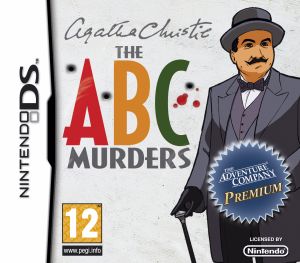
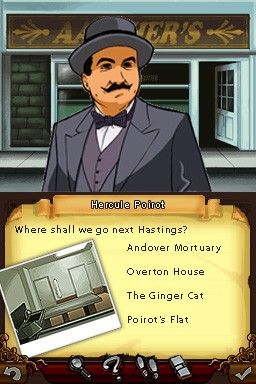










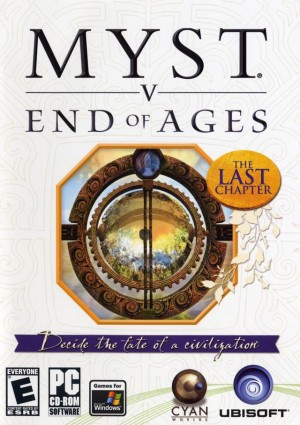
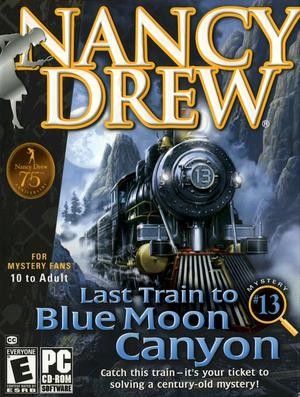
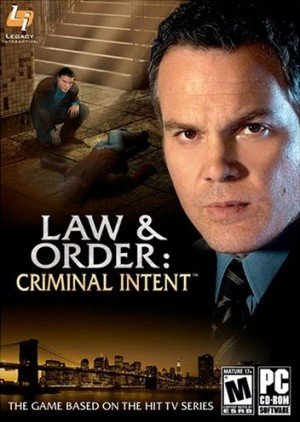


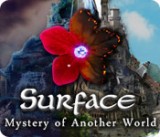

__small.jpg)

